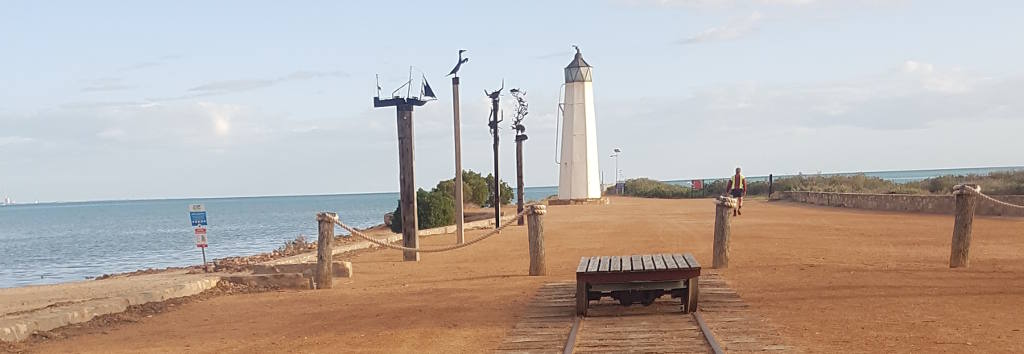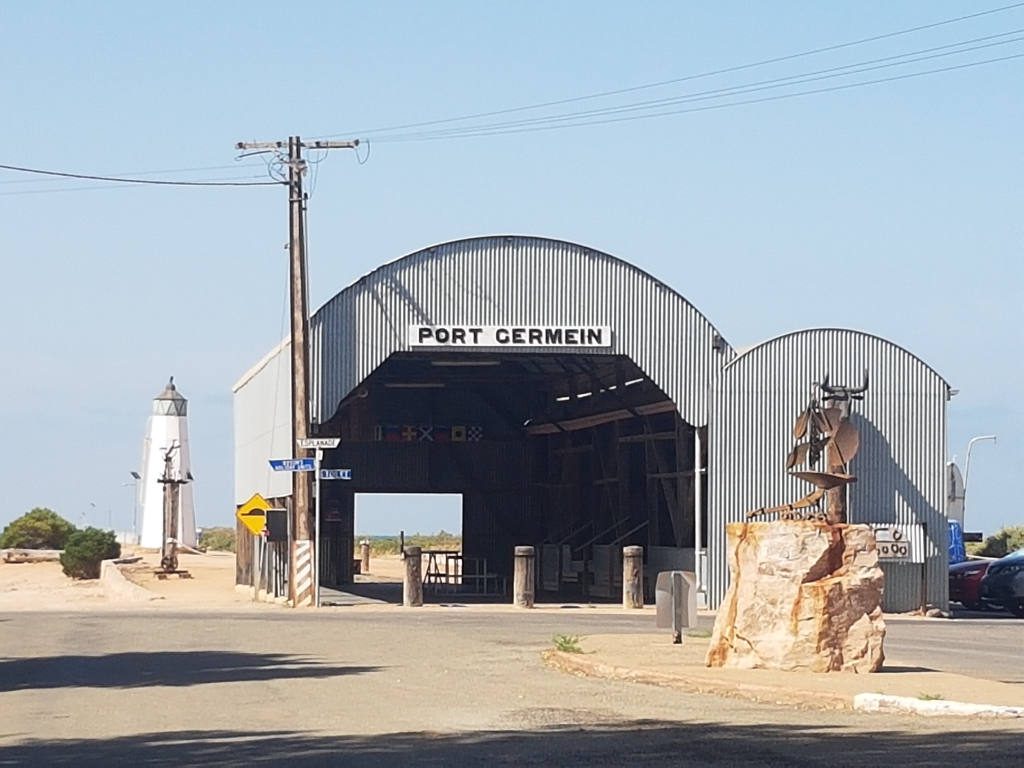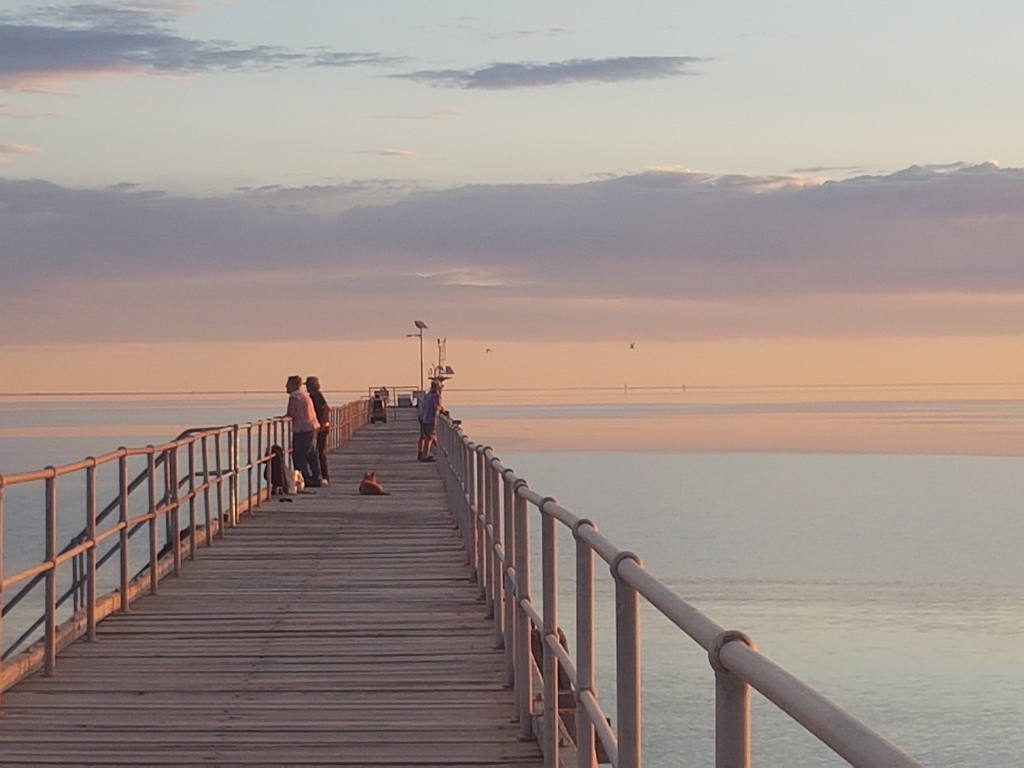
Our Heritage Precinct features the Jetty, tide clock, light house and the heritage listed grain shed. There are signs and information boards to help you discover the history of Port Germein as a significant shipping port.
Along the foreshore you’ll find sculptures as well as a mosaic art trail, murals and signs detailing information on the various ships after which Port Germein streets were named.
Taking one of our short heritage walks around town helps you identify some of the historic buildings and their original uses, and a drive out to the cemetery gives you a good picture of our history.
Our local monthly markets feature a range of local farm produce along with arts and crafts, and you can purchase local produce from the Red Post Shop Cafe.
Just up the road you will find the Baroota Historic Ruins along with the Baroota Homestead ruins and Cemetery at the Mambray Creek entrance to Mount Remarkable National Park.
Further afield you’ll find art galleries, heritage walks and museums in Port Pirie (Boat Museum, Regional Art Gallery, National Trust Railway Museum, Mural Trail, Self-guided Heritage Walk, Carn Brae Heritage Accommodation and Building), Port Augusta Wadlata Outback Centre, Port Augusta Cultural Centre, Town Murals, Royal Flying Doctors Service and Port Augusta Train Park), Crystal Brook (Art, Craft and Antique Gallery), Melrose (Historical Landmarks and Nukunu Peoples Interpretive Centre), Laura (Sculptures and Antiques), Wirrabara (Silo Art, Arts and Craft House) and Wilmington (Toy and Puppet Museum).
Interesting Facts about Port Germein
Did you know Port Germein was a thriving port in the 1800’s with grain shipped from here to the world. The Jetty has always played a vital role in the area, and is now widely used for recreational purposes.
A Brief History of Our Jetty
The building of the Port Germein Jetty followed much lobbying of the Government by the farmers and merchants of the district during 1879 and 1880. Tenders were called for the construction of the Jetty in September 1880, and work had commenced on its construction before the end of that year.
[foogallery id=”431″]

